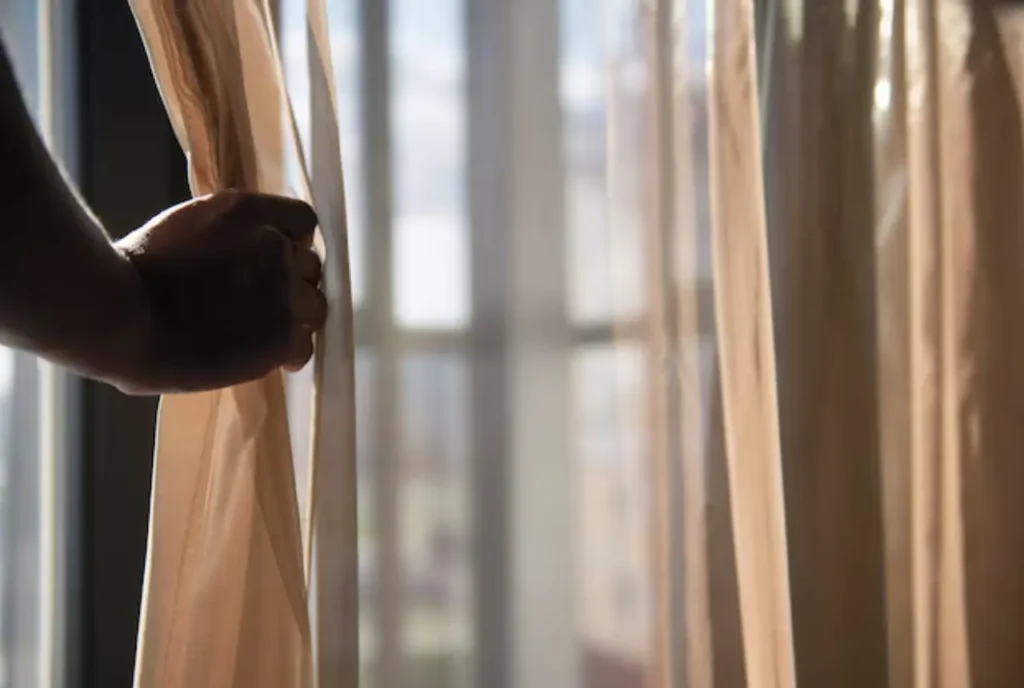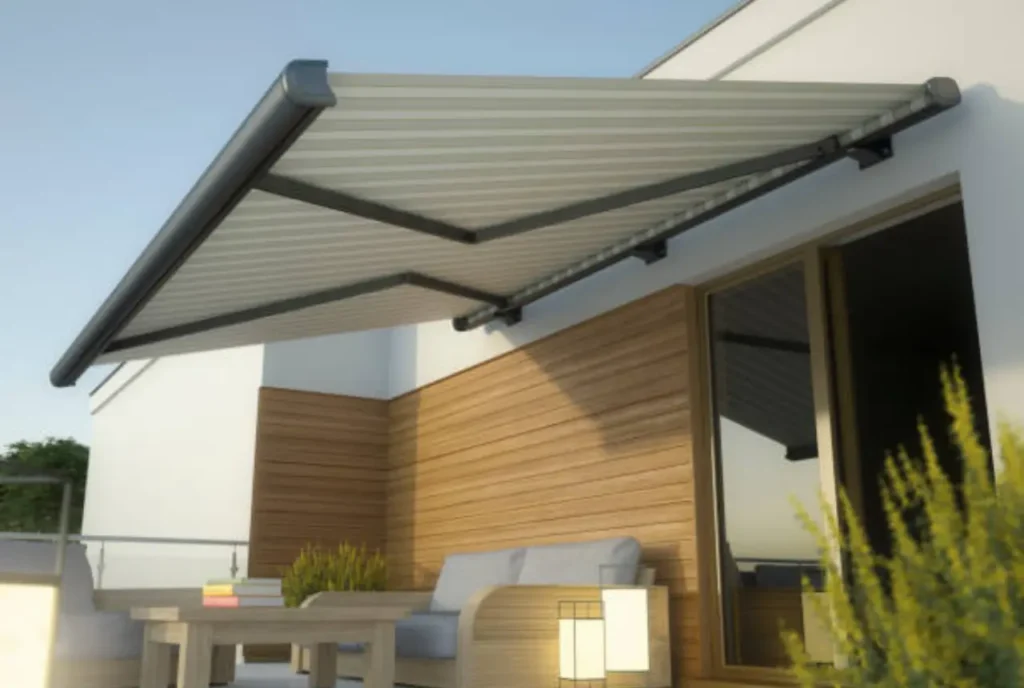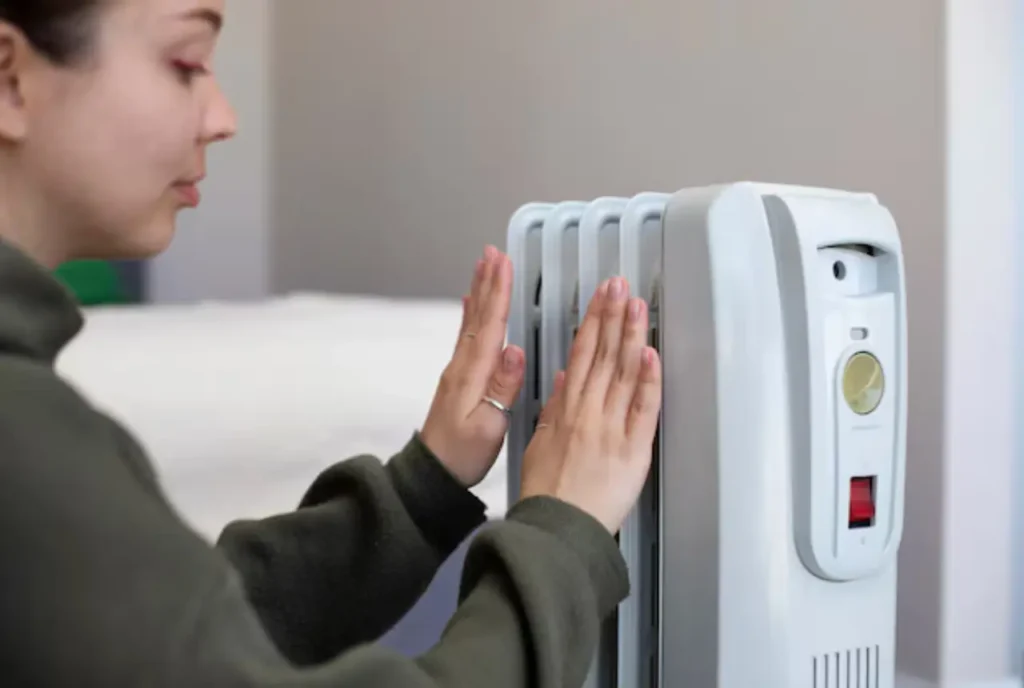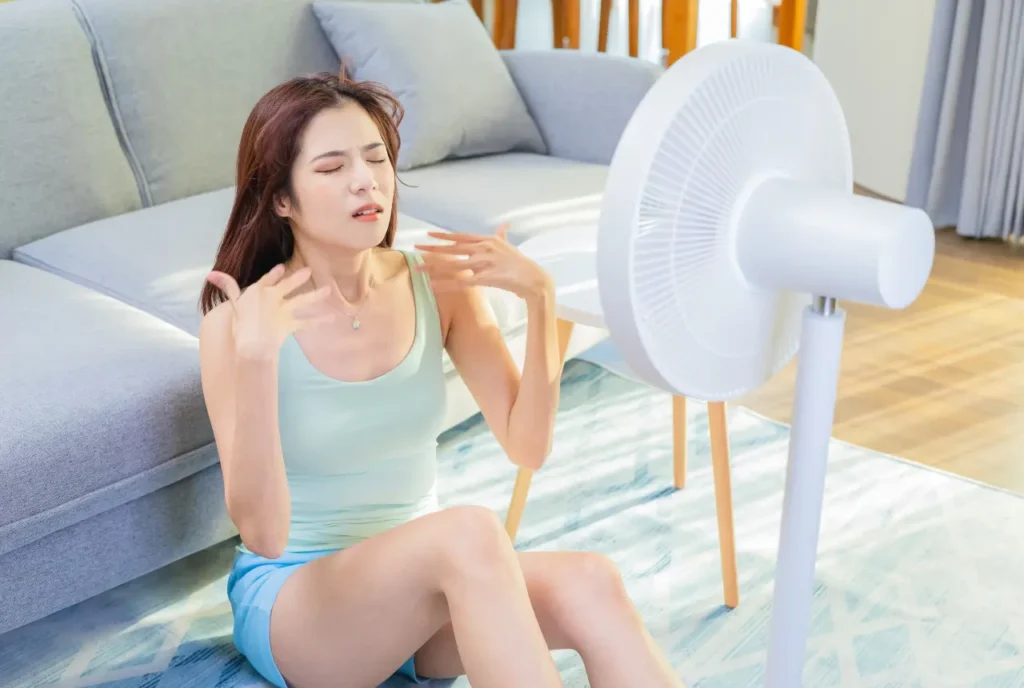![]()
How to keep house cool in summer is always the biggest question, as the summer heat can turn your home into an uncomfortable furnace. But before we dive into solutions, let’s understand how that heat gets in!
The Sneaky Science of Summer Heat
Our houses are bombarded by heat in three main ways:
- Conduction: Think of a hot pan searing a butter patty. Touch transfers heat directly from a hot object (like sunshine on your roof) to a cooler object (like your attic).
- Convection: Imagine warm air rising. Heat can travel through air currents, like hot air rising from pavement or warm breezes carrying heat indoors.
- Radiation: Feel the sun’s warmth on your skin? That’s radiant heat, invisible waves transferring energy directly. Sunlight streaming through windows is a prime culprit.
Heatwave Culprits: Everyday Sources
Beyond the sun, several internal sources contribute to summer heat gain:
- Appliances: Ovens, dryers, and even electronics generate heat, warming your living space.
- People: Our bodies naturally emit heat, adding to the indoor temperature.
- Cooking: Stovetops and ovens radiate significant heat, especially during heavy cooking sessions.
The Insulation Advantage
Thermal insulation acts like a shield, slowing the flow of heat into your home. Properly insulated walls, attics, and floors can significantly reduce unwanted heat gain, keeping your cool air in and the hot air out.
Now that we understand how and why our houses heat up, we can explore effective strategies to keep them cool and comfortable all summer long!
Blocking Heat Before It Enters

Window Treatments
Windows is a double-edged sword in summer. They bring in light and fresh air, but they’re also prime entry points for heat. Here’s how to turn them into heat shields:
Curtains and Shades
- Blackout curtains: These champions of darkness block sunlight and its associated heat. Look for thick, tightly woven fabrics in light colors, which reflect even more heat.
- Solar shades: These specialized shades block a significant portion of solar heat while allowing some light to pass through. Consider roller shades or exterior solar screens for maximum effectiveness.
- DIY options: For a budget-friendly approach, create fabric panels or use reflective foil on existing blinds (ensure proper ventilation to prevent heat build-up behind the foil).
Balancing Light and Style
The location and severity of spinal cord injuries can differ, but they can impact functionality such as movement, sensation, and occasionally respiration.
Stabilizing the vertebrae, symptom management with medication, and rehabilitation to maximize function and independence are the primary treatments. Electrical stimulation and stem cell therapy research hold great potential for future developments.
Navigating life with a spinal cord injury necessitates adaptations, but individuals can attain a sense of fulfillment through perseverance and assistance.
They can adjust to their surroundings, seek emotional support, and maintain social connections. Keep in mind that the path following a spinal cord injury is one of fortitude and optimism.
Exterior Shading

Don’t underestimate the power of strategically placed shade from trees, awnings, and trellises.
- Awnings: These mounted fixtures provide shade over windows and patios, significantly reducing heat gain. Choose retractable awnings for flexibility and consider awning materials that reflect sunlight.
- Trees: Well-placed deciduous trees offer a natural cooling solution. Their leaves block sunlight in summer and allow warmth in winter. Plant trees strategically to shade south-facing windows, the most vulnerable to direct sunlight.
- Trellises: Create a living shade solution by training climbing vines on trellises to cover walls or patios. Choose fast-growing vines for quicker results.
Planting Strategies and Maintenance
Tree planting demands perseverance; therefore, you should contemplate a blend of short-term and long-term remedies. Temporary shade structures or shade sails can offer instantaneous relief while your trees mature.
Bear in mind that correct tree placement is vital. Trees should not be planted too close to structures, as their roots can cause foundation damage.
Addressing Leaks and Drafts
Inconspicuous air gaps surrounding windows and doorways may serve as conduits for warm air from the exterior. To reduce energy costs and maintain cool interior temperatures, these leaks must be sealed.
- Weatherstripping: This compressible material fills gaps around doors and windows, preventing drafts and heat transfer. It’s a DIY-friendly solution with various types available for different applications.
- Caulking: For cracks and larger gaps, use a caulk appropriate for the material (wood, brick, etc.). While caulking can be DIY-friendly for small projects, consider hiring professionals for extensive work.
- Professional Weatherization: For a comprehensive approach, consider a professional weatherization service. They can identify and seal air leaks throughout your home, maximizing energy efficiency and keeping your cool air in.
By employing these tactics, one can establish a substantial barrier against the intense summer heat, thereby preserving the temperature of the residence and diminishing the need for air conditioning.
Natural Cooling Strategies for Your Home

Now that we’ve blocked the heat from entering, let’s explore natural cooling strategies to further enhance your summer comfort:
Ventilation Strategies
- Harnessing Prevailing Winds:: Determine the prevailing summer wind direction. To allow cool air to enter a home, open windows on the windward side; conversely, maintain closed windows on the leeward side to block hot air from entering. This generates a cross-ventilation flow that naturally cools the space.
- Nighttime Ventilation: Utilize ventilation during the night to capitalize on the lower temperatures. Nighttime ventilation through open windows will circulate chilly air throughout the home. During the day, shut windows and draperies to retain the cool air inside.
- Exhaust Fans: Your Kitchen and Bathroom Allies: Exhaust Fans Do not undervalue the effectiveness of bathroom and kitchen exhaust fans. They prevent the spread of heated, humid air produced during activities such as cooking and taking a shower throughout the residence.
Evaporative Cooling: Bringing the Oasis Indoors
- The Science of Swamp Coolers: Evaporative coolers, alternatively referred to as swamp coolers, function by replicating the inherent cooling mechanism of evaporation. An aerated wind is produced when water absorbs heat from the atmosphere during the evaporation process.
- Placement and Maintenance: Evaporative coolers should be positioned near windows, allowing cool air to circulate throughout the home, for maximum efficiency. Consistent maintenance of the water reservoir and filter pads is imperative to uphold optimal cooling performance and inhibit the development of mold.
- Embrace Dry Climates: Evaporative refrigerators operate most efficiently in arid regions (ideally with a relative humidity of less than 60%), where moisture is efficiently absorbed through the evaporation process. They may contribute to an unfavorably muggy atmosphere in humid regions.
Utilizing Ceiling Fans
Ceiling fans don’t lower air temperature, but they create a wind chill effect that makes you feel cooler. Here’s how to maximize their effectiveness:
- Summer Spin: During summer, set your ceiling fan to rotate counter-clockwise. This pushes cool air downward, creating a comfortable breeze.
- Fan Placement and Size: For optimal airflow, position ceiling fans in the center of the room and choose a fan size appropriate for the room’s square footage.
- Energy-Efficient Options: Look for Energy Star-rated ceiling fan models that use less energy while delivering powerful airflow.
By implementing these organic cooling techniques, one can establish a summer environment that is more comfortable and potentially decrease dependence on air conditioning, thereby conserving both energy and financial resources.
In the following section, we will discuss further strategies and techniques to ensure optimal comfort throughout the summer season.
Energy-Efficient Practices to Minimize Cooling Needs

Even with the strategies above, some air conditioning use might be inevitable. Here’s how to minimize your reliance and maximize efficiency:
Smart Thermostat Use
- Temperature Tweaks: A small adjustment can make a big difference. Set your thermostat to a slightly higher temperature during the day (around 78°F) and adjust it lower at night for comfortable sleep.
- Scheduling and Automation: Smart thermostats allow you to program schedules that automatically adjust temperatures when you’re away or sleeping. This ensures you’re not cooling an empty house.
- Smart Benefits: Smart thermostats can learn your routines and preferences over time, further optimizing temperature control and energy savings.
Appliance and Lighting Efficiency
- Star Power: Look for appliances with high Energy Star ratings. These models are designed to use less energy, reducing heat generation during operation.
- Lighten Up: Replace all traditional incandescent light bulbs in your home with LED bulbs. Significantly more energy is saved and less heat is produced by LEDs. Unplugging electronic devices and lights when not in use is an easy and efficient method of minimizing heat absorption.
Air Conditioning Optimization
- Filter Power: An obstructed air conditioner filter increases energy consumption and reduces efficiency by requiring the unit to operate at a higher level. Replace or clean your air conditioner filter regularly per the manufacturer’s instructions.
- Strategic Scheduling: Whenever possible, plan air conditioning use for the height of the day, which is typically late afternoon or early evening. Leverage the benefits of lower morning and nighttime temperatures.
- Upgrade Considerations: Consider replacing older, inefficient air conditioning units with ones that are more recent and energy-efficient. Although the initial investment is substantial, the long-term cost reductions on energy expenses can be substantial.
You can maintain control over your summer energy expenses and reduce your dependence on air conditioning by implementing these energy-efficient practices.
In the subsequent segment, we shall examine some supplementary recommendations and modifications to one’s way of life to combat the heat and establish a comfortable and refreshing refuge during the summer.
DIY Summer Cooling Hacks and Lifestyle Adjustments

Beyond the strategies above, here are some bonus tips for a cool and comfortable summer:
Cool Bedding and Clothing
- Embrace natural fabrics like breathable cotton for sheets and clothing.
- Consider cooling pillows and mattress pads for a refreshing night’s sleep.
Strategic Cooking and Bathing
- Opt for outdoor grilling or microwaving to minimize heat generation from your oven.
- Take cooler showers instead of hot baths to regulate your body temperature.
Creating a Cool Oasis
- Decorate with houseplants that naturally cool your space and improve air quality.
- For a localized cooling effect, strategically place bowls with ice in front of fans.
By incorporating these hacks and making small adjustments to your daily routine, you can create a cool and comfortable summer haven in your own home!
Comfort in the Summer
The summer heat need not transform a dwelling into a furnace. By adhering to these procedures, one can establish a cozy and pleasant sanctuary. Utilize window treatments, exterior shading, and air gap sealing to block heat.
Employ natural cooling methods such as ceiling fans, ventilation, and evaporative refrigerators. Utilize intelligent thermostats, energy-efficient appliances, and strategic scheduling to reduce air conditioning usage.
Lastly, adopt lifestyle modifications and do-it-yourself improvements to further enhance your cooling capabilities. You can ensure a comfortable summer throughout the entire season by implementing these effective strategies and maintaining a level head.







